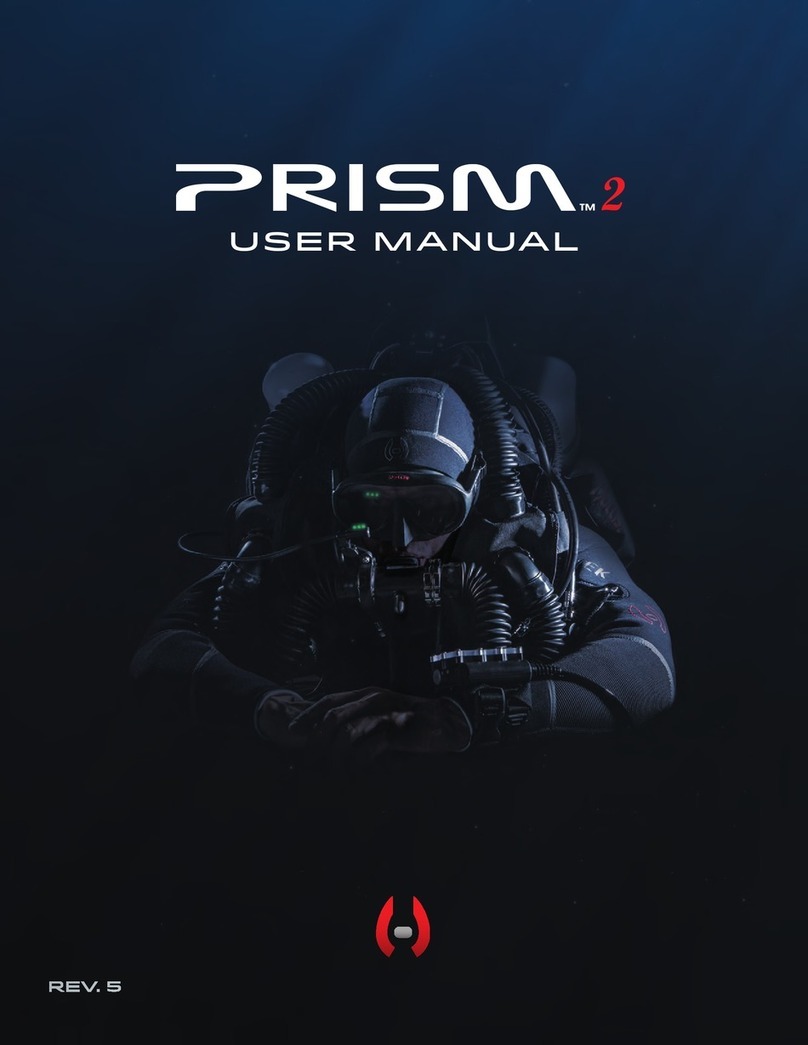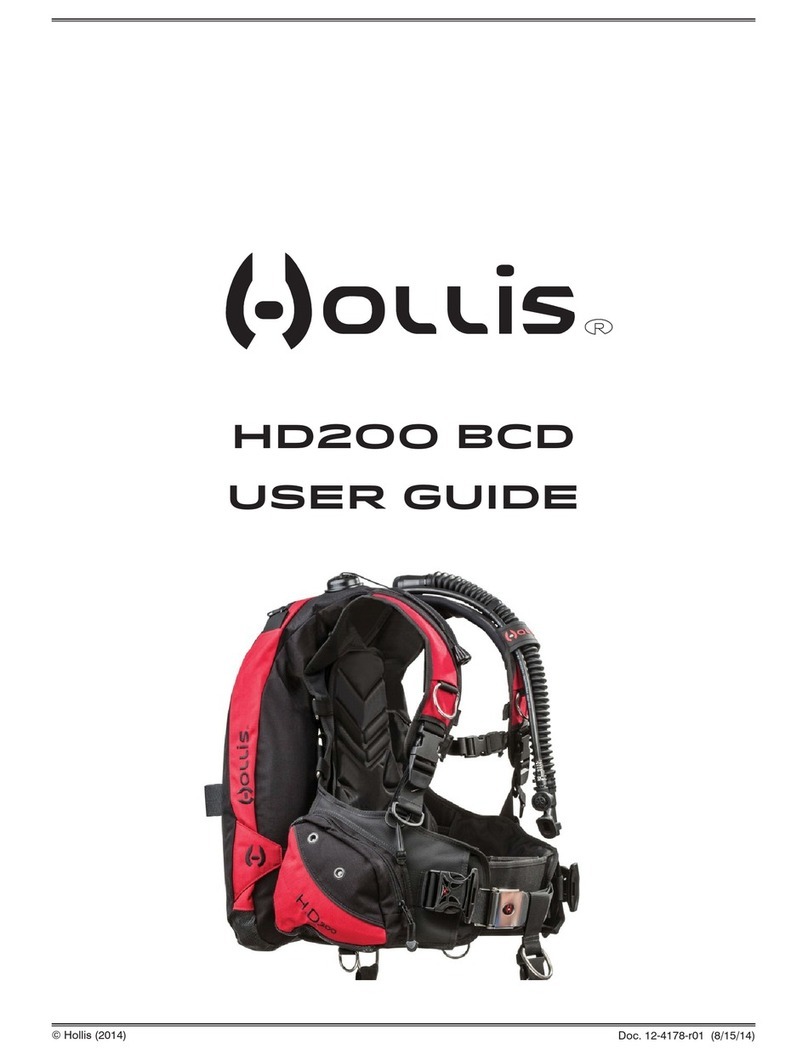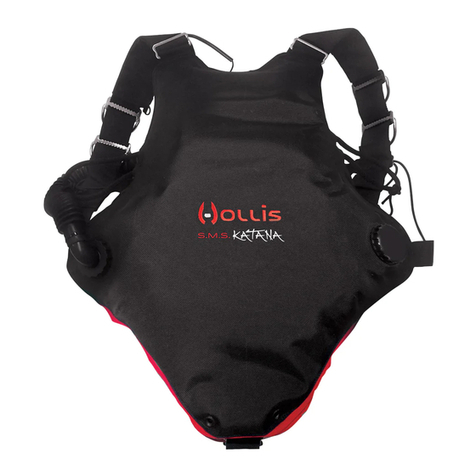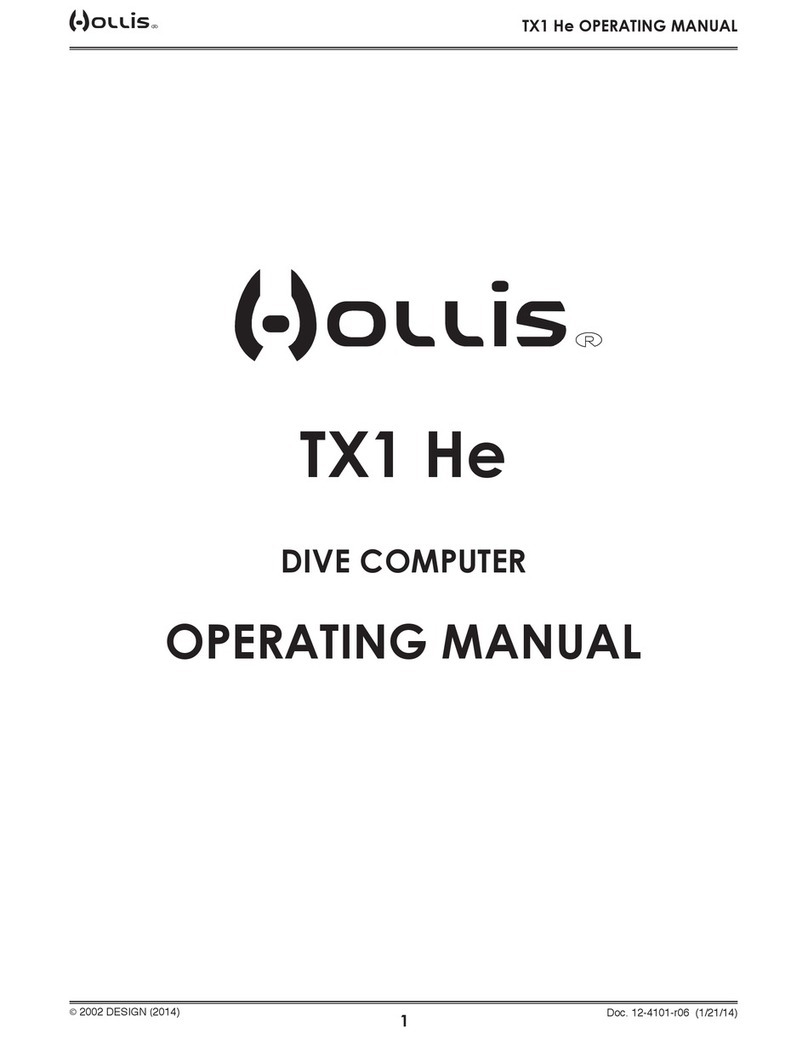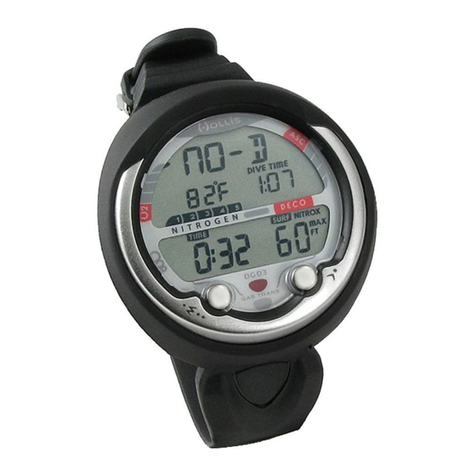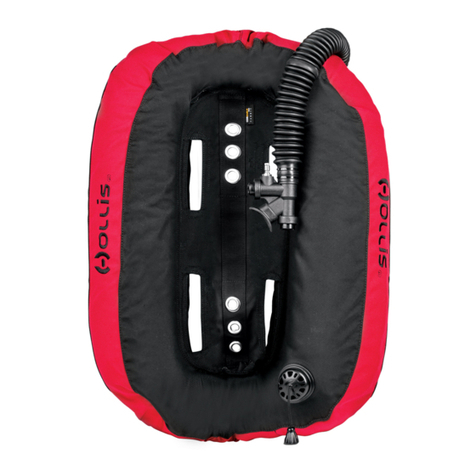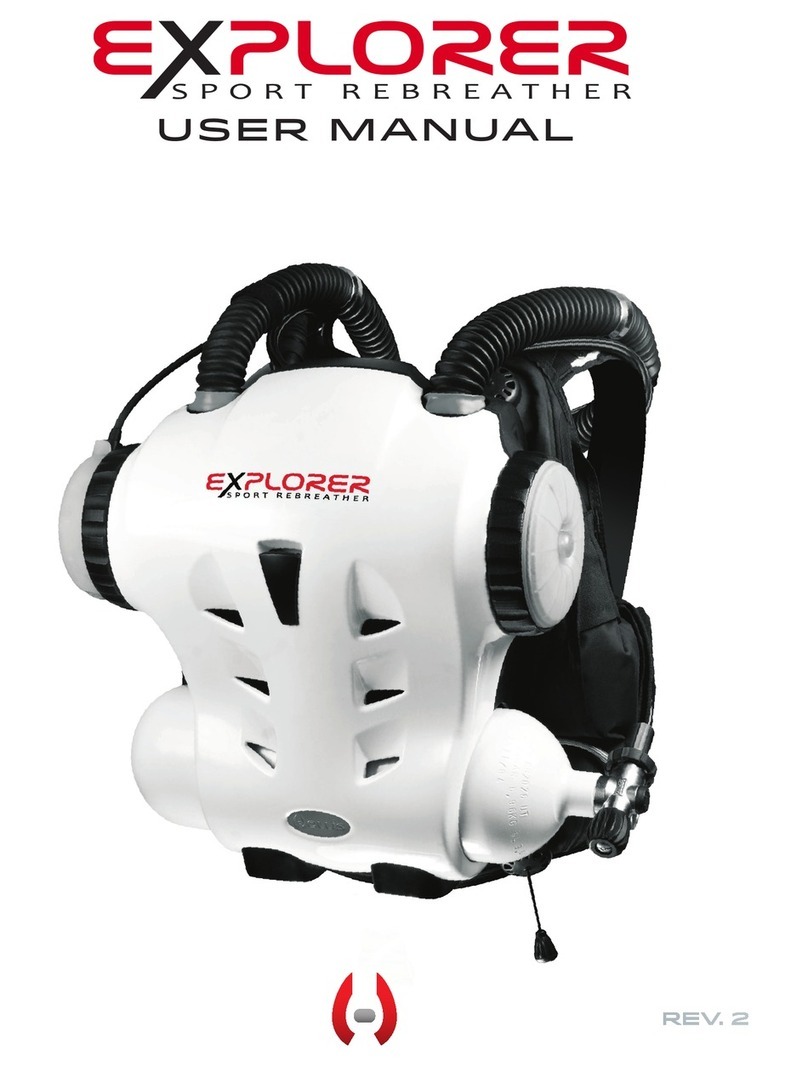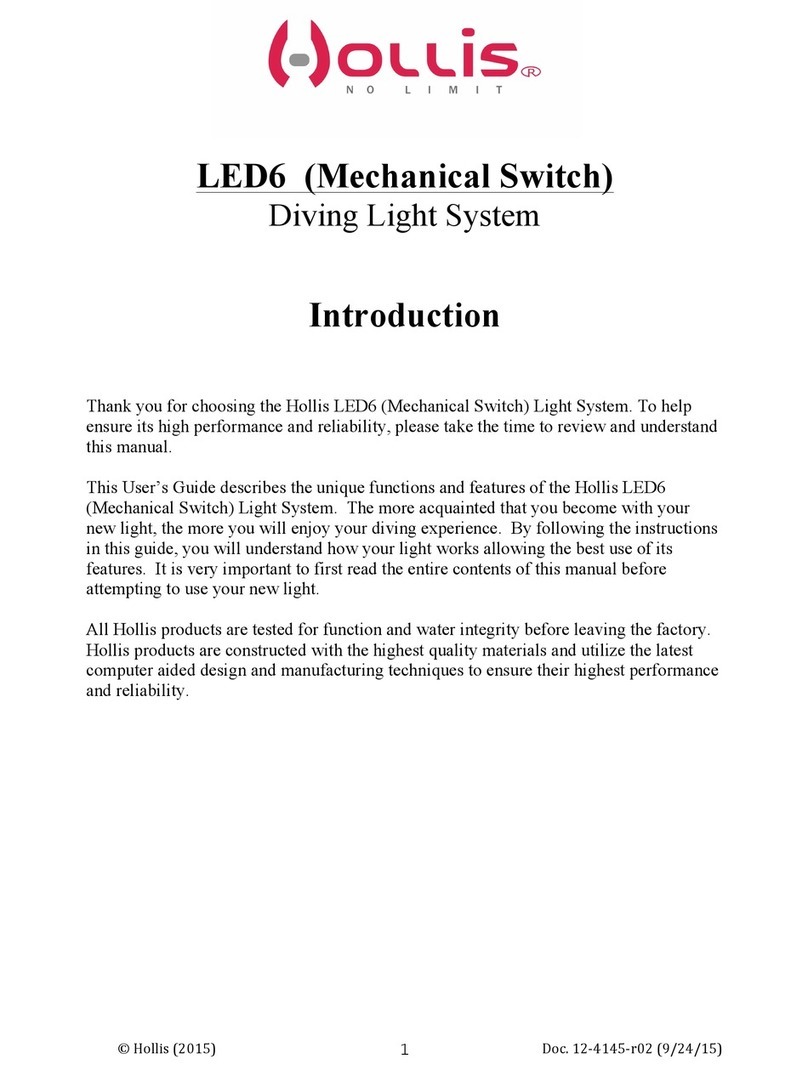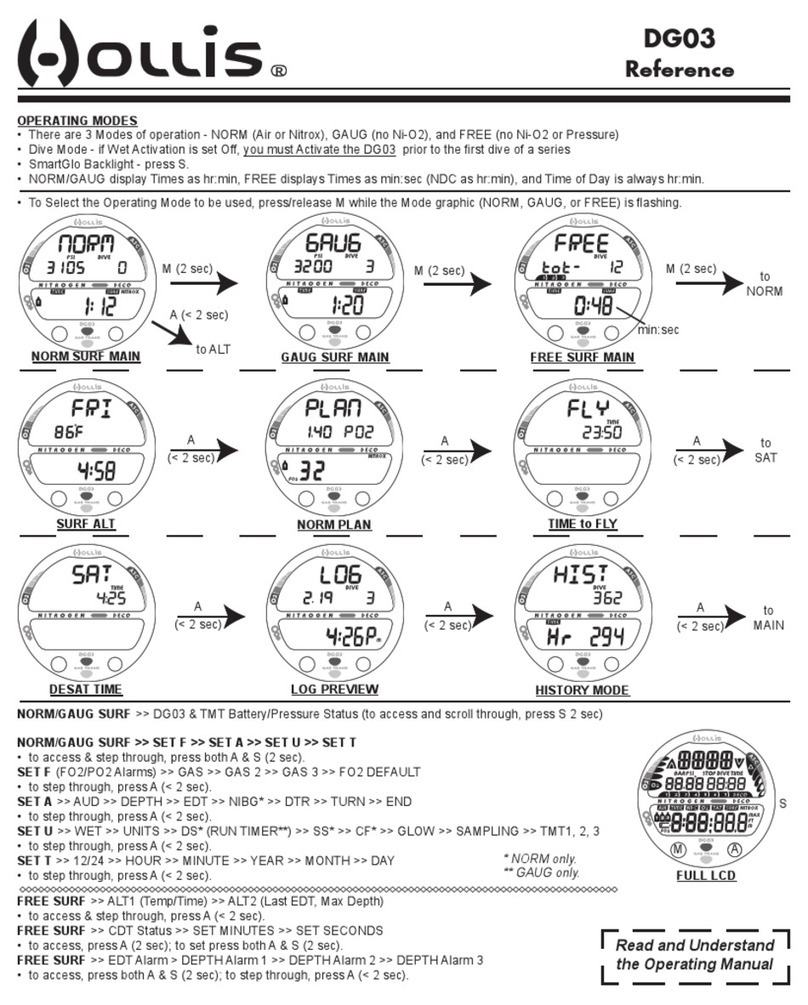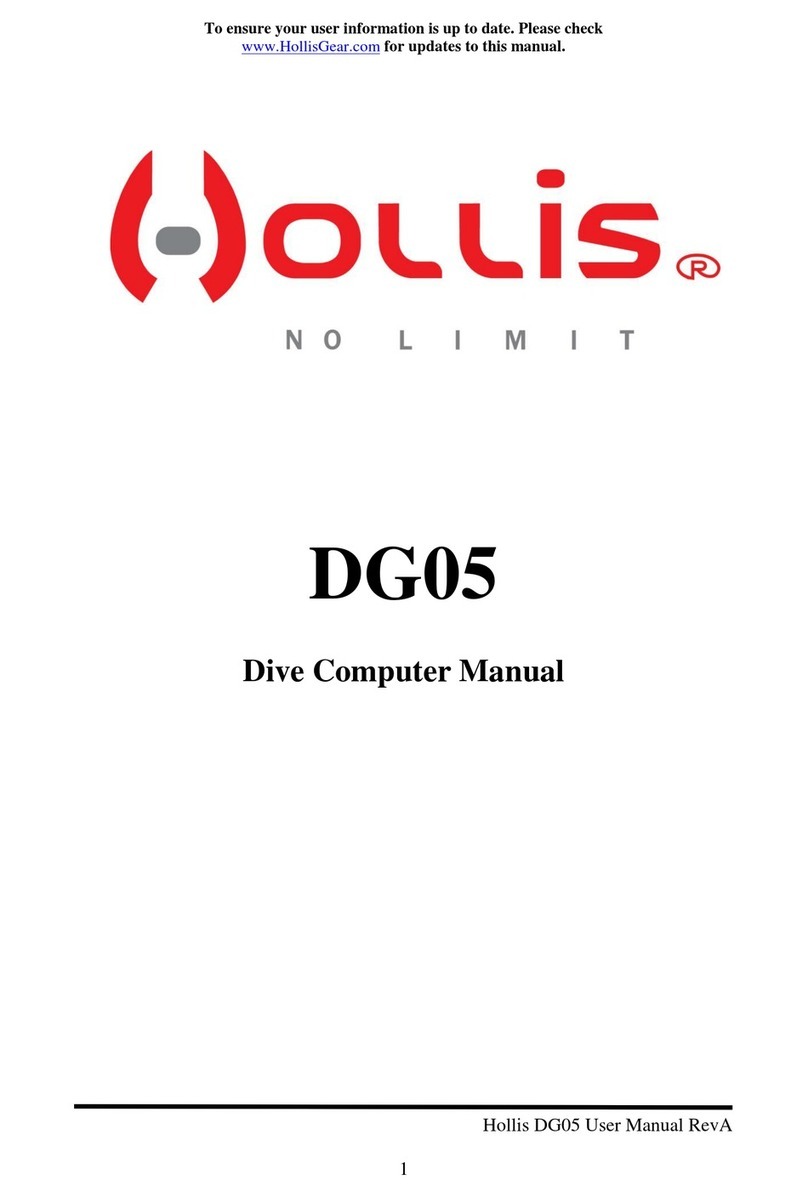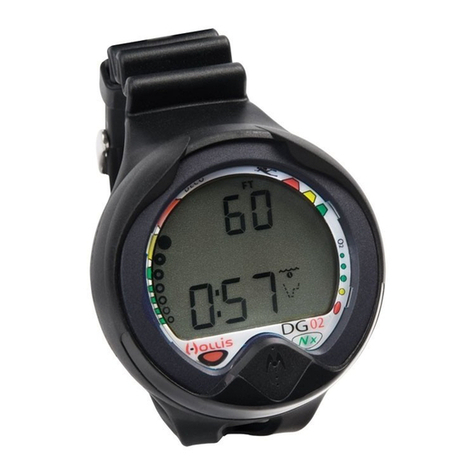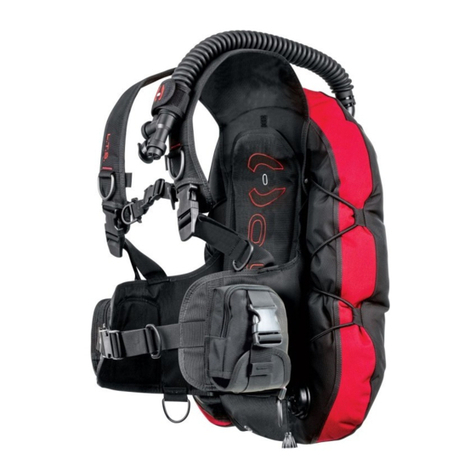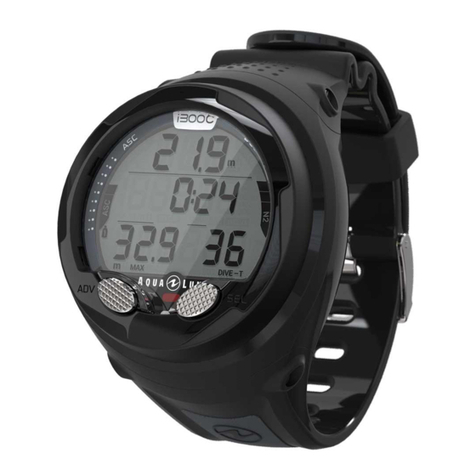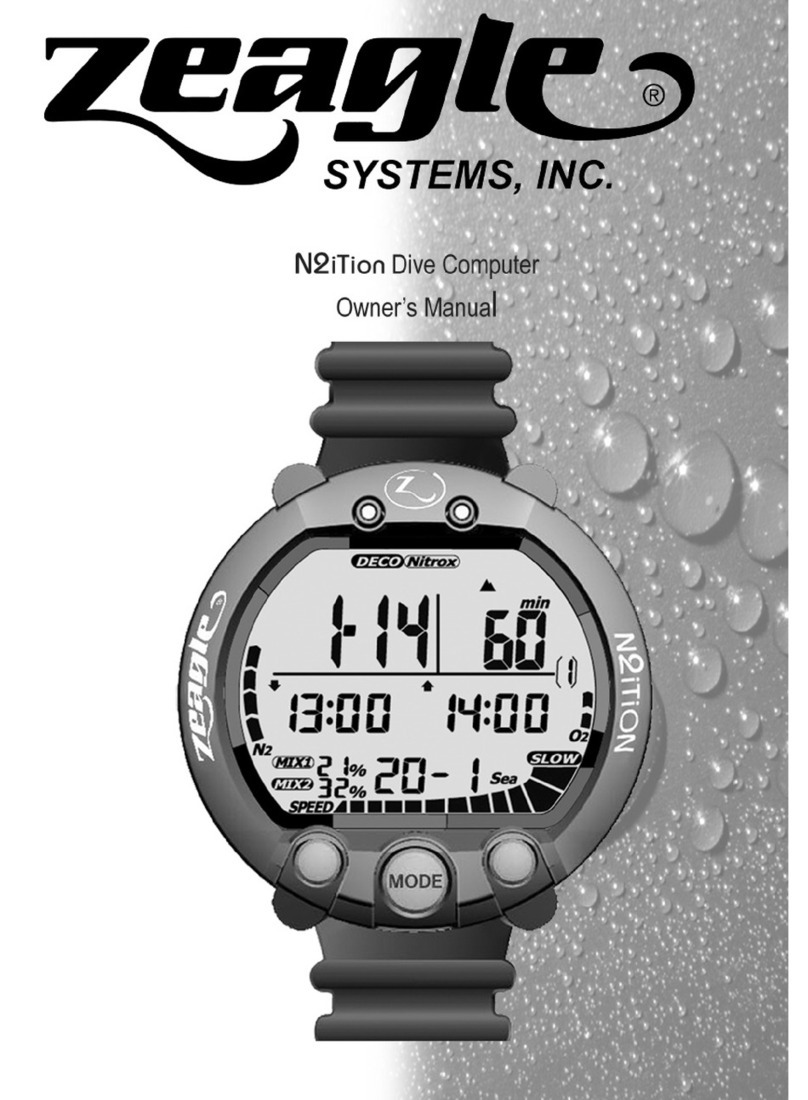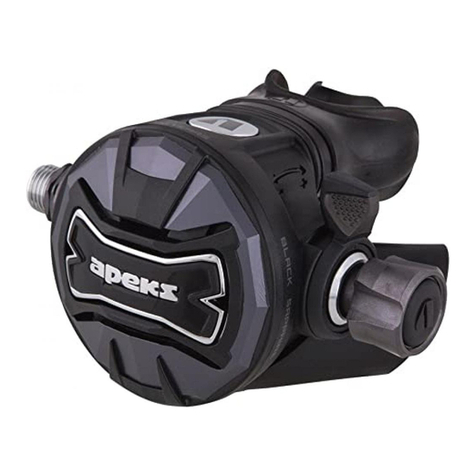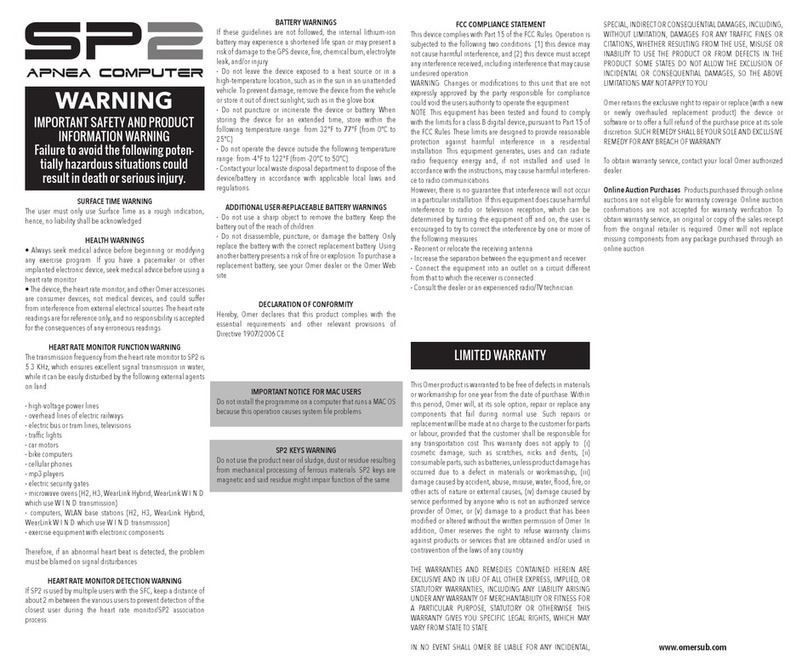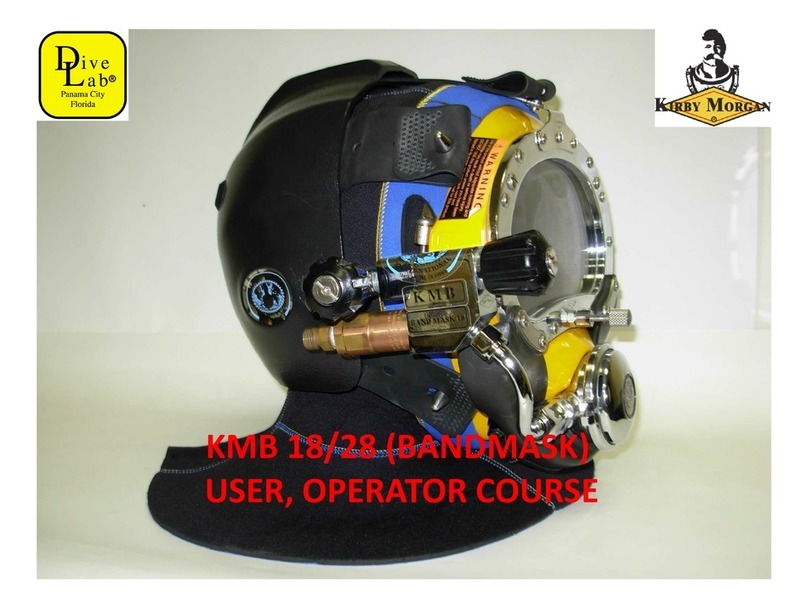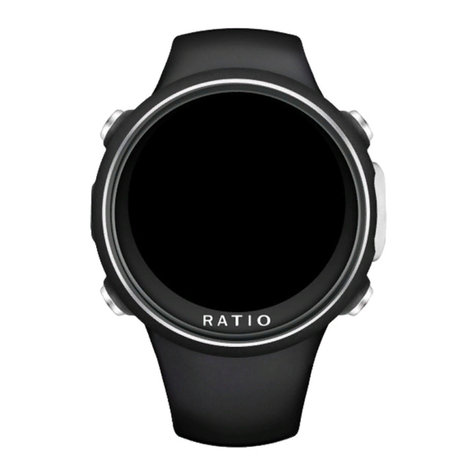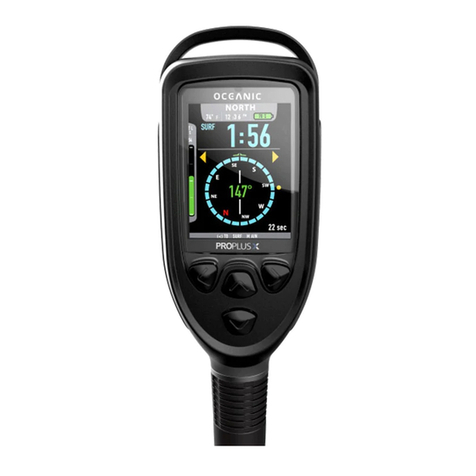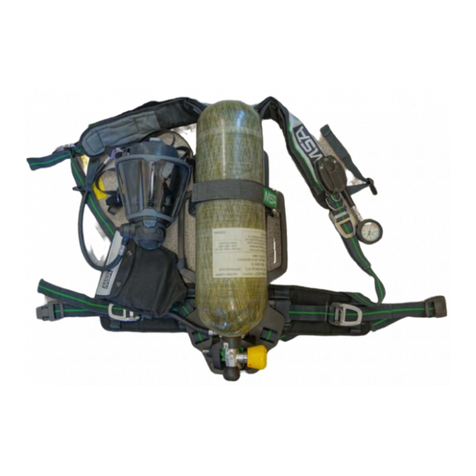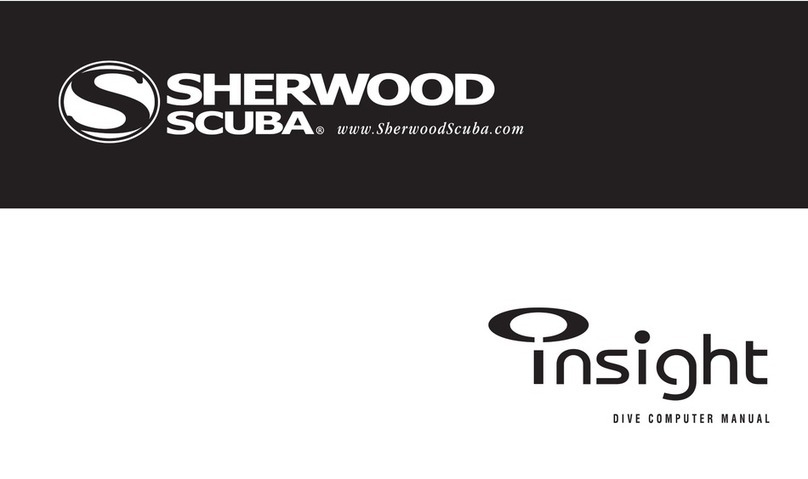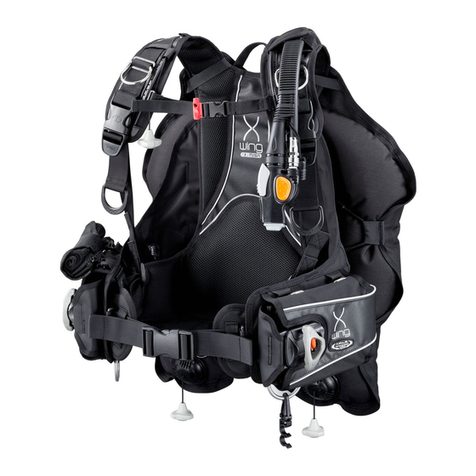
5 |
WARNING: HIGH PRESSURE OXYGEN
The PRISM 2 uses cylinders, gas feed lines, pressure gauges and other devices which will contain pure oxygen at
high pressure when in operation. Oxygen by itself is non-ammable, however it supports combustion. It is highly
oxidizing and will react vigorously with combustible materials. Oxygen at elevated pressure will enhance a re or
explosion and generate a large amount of energy in a short time.
The user must maintain all parts of the PRISM 2 that can come into contact with high-pressure oxygen as oxygen-
clean components. This includes scheduled servicing by a Hollis service professional, and using approved oxygen-
compatible lubricants on any part of the gas delivery systems that will come into contact with high-pressure
oxygen.
If any part of the oxygen-clean system comes into contact with contaminants or is accidentally ooded with
any substance (including fresh water), you MUST have the entire high-pressure oxygen system serviced by an
authorized PRISM 2 service professional prior to use. Failure to do so can cause re or explosion and lead to
serious injury or death.
WARNING: DESIGN AND TESTING
The Hollis PRISM 2 has been designed and tested, both in materials and function to operate safely and consistently
under a wide range of diving environments. You must not alter, add, remove, or re-shape any functional item of the
Hollis PRISM 2. Additionally, NEVER substitute any part of the Hollis PRISM 2 with third-party items which
have not been tested and approved by Hollis for use with the PRISM 2.
This includes, but is not limited to, hoses, breathing assemblies, electronics, breathing gas delivery assemblies
and their constituent parts, sealing rings, valves and their constituent parts and sealing surfaces, latches, buoyancy
devices, ination and deation mechanisms and on-board alternate breathing devices.
Altering, adding, removing, re-shaping or substituting any part of the Hollis PRISM 2 with non-approved parts can
adversely alter the breathing, gas delivery or CO2 absorption characteristics of the Hollis PRISM 2 and may create
a very unpredictable and dangerous breathing device, possibly leading to serious injury or death.
Non-approved alterations to functional parts of the PRISM 2 will automatically void all factory warranties, and
no repairs or service work will be performed by any Hollis service professional until the altered PRISM 2 unit is
brought back into factory specications by a Hollis service professional at the owner’s expense.
!
!
